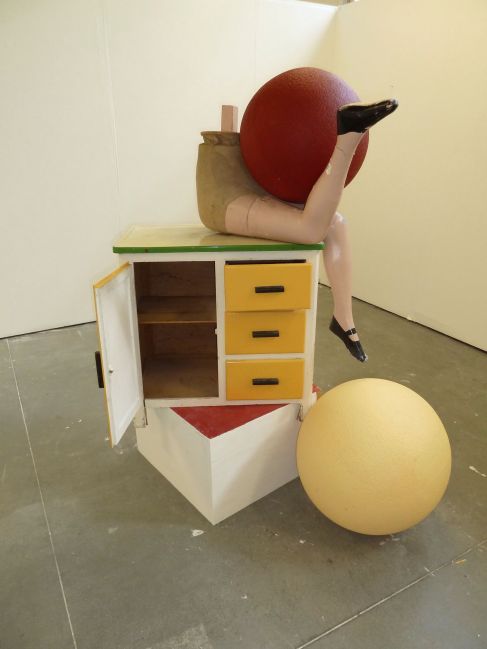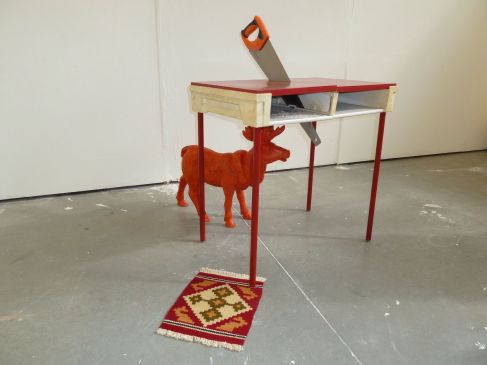At the Work In Progress exhibition (images in previous post) artist Sarah Taylor asked me the question ‘Where is the abject?‘ This led me to look at the works by the artists that interested me with a different critical stance.
I began to see that it was the abject which made works such as Berlinde De Bruycke and Louise Bourgeois so powerful and through this there was a dawning awareness that I was keeping the abject in abeyance even though I instinctively felt it to be an important part of my work.
Berlinde De Bruycke, ‘Animal’ 2004
Louise Bourgeois, ‘Temper Tantrum’ 2000
According to Gaston Bachelard in ‘The Poetics of Space’, 1994 reluctance to reveal the abject is natural. In the chapter draws, chests and wardrobes he describes the casket as a metaphor for the psyche.
The casket contains things that are unforgettable,unforgettable to us but also for those to whom we are going to give our treasures. Here is the past, the present and the future condensed. Thus the casket is the memory of what is immemorial.
If we take advantage of images to indulge in psychology, we find every important recollection…is set in it’s little casket. The pure recollection, the image that belongs to us alone, we do not want to communicate; we only give its picturesque details.
This has resonance with me and I can agree that giving up the hidden meaning is a difficult matter. However the artist may come to a point, the point at which I now find myself, where the object becomes meaningless and shallow without the abject. Bachelard goes on to say,
The outside has no more meaning. And quite paradoxically, even cubic dimensions have no more meaning, for the reason that a new dimension-the dimension of intimacy-has just opened up.
Julia Kristeva talks about the rupture that gives birth to a new and more meaningful status for the artist in The Power of Horror An Essay on Abjection, 1982.
When the boundary between subject and object is shaken, and when even the limit between inside and outside becomes uncertain, the narrative is what is challenged first. If it continues nevertheless, its makeup changes; its linearity is shattered, it proceeds by flashes, enigmas, short cuts, incompletion, tangles and cuts. At a later stage, the unbearable identity of the narrator and of the surroundings that are supposed to sustain him can no longer be narrated but cries out or is decried with maximal stylistic intensity (language of violence, of obscenity, or of a rhetoric that relates the text to poetry). The narrative yields a crying out theme that, when it tends to coincide with the incandescent states of boundary-subjectivity that I have called abjection, is the crying-out theme or suffering-horror.
After this research I began to feel that my work is now at a point where it is about to ‘shaken’.
I decided that I was going to remake the miniature scenes of Advocaat at Ashdown and Beaujolais 71 giving space for the abject to emerge….
The Illusion Of Madam Beulah, 2011
Saw IV, 2011
Street, 2011
The Ambition, 2011
She Came In Through The Out Door, 2011
There is quite a lot to digest here. References to cutting and sawing are obvious, however in this body of work I begin to discover a freer way of working letting my consciousness roam through the process of making rather than pinning an idea down to an exact finished product.
The piece Three Sisters I is now represented here as another work.
Tongue, 2011
Don’t Walk Away, 2011
The last image I want to put with this group is only a sketch and needs a lot more thought but here it is nevertheless.
Cuban Wedding Ring, Sketch. 2011










